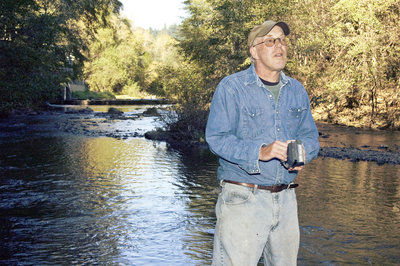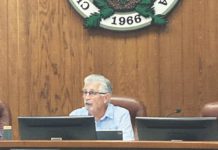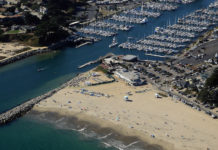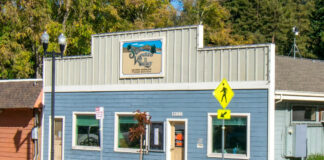
It’s easy to take water for granted: go to the tap, turn a handle and you’ve got it.
A local historian, however, hopes to remind his San Lorenzo Valley neighbors that each faucet is the legacy of more than 80 years of work to assure local control of the valley’s water.
In his recently published book, “The San Lorenzo Valley Water District: A History,” Boulder Creek resident Randall Brown explores the valley’s history of water use.
He follows the story of water from the earliest days of the San Lorenzo Valley’s logging mills and flumes, through the consolidation of communities’ water interests by outside corporations during the Great Depression, to the gradual rise of locally owned and locally controlled water in the 1960s through early 2000s.
“What I really enjoy about doing my work is that it gives you a whole new perspective on things,” Brown said. “You see what was and what is.”
Brown had been conducting research on the history of water use in the San Lorenzo Valley — poring over documents in the collections at University of California, Santa Cruz, as well as old issues of the Valley Press — since 2005. Then the SLV Water District approached him two years ago to commission a book.
The resulting book focuses specifically on the creation of the water district, beginning in the late 1920s and early 1930s, as people living in Boulder Creek, Brookdale and Ben Lomond saw outsiders taking control of their water: first a holding company in Oakland, then Minnesota-based Citizens Utilities Corp.
Felton’s water interests — and most of the town itself, Brown said — were at the time owned by George Fetherston, a successful bootlegger who’d made his fortune defying Prohibition.
“Felton was unique,” Brown said. “It’s the one that wasn’t outside-controlled.”
The book describes the series of attempts by the fledgling district to acquire watershed land, pass bond measures and engage Citizens Utilities in court to wrest control back into local hands. It gained traction in the late 1950s and early 1960s.
“One of the things that really changed the game for everybody was the flood of 1955,” Brown said.
The flood’s severe damage to downtown Santa Cruz roused the city’s interest in the Newell Creek watershed, which the SLV district had acquired with the intent of eventually building a dam.
Because voters in the valley communities at the time weren’t enamored with passing bonds to construct the dam, the district sold the land for $300,000 to the city of Santa Cruz, which dammed Newell Creek in 1960 and created what is now Loch Lomond.
“For the first time, the district really now had some money,” Brown said. “And they had also gained some political backing from this.”
That money and clout helped the district purchase the Ben Lomond, Brookdale and Boulder Creek water interests from Citizens Utilities in 1965, but not before Citizens Utilities acquired the rights to Felton’s water interests from the Fetherston family.
The book explores four decades of clashes between environmentalists and developers over the future of water use, possibilities for sewage systems and the question of what to do about Felton’s water, which remained under the control of increasingly distant outside interests as the 20th century drew to a close, before eventually being purchased by the people of Felton several years ago.
The book is available at the White Raven, 6253 Highway 9, in Felton; at the SLV Museum, 12547 Highway 9, in Boulder Creek; and at the water district office, 13060 Highway 9, in Boulder Creek, as well as directly from Brown.
Brown said he hopes the book’s 500-copy first run will generate enough interest to warrant the printing of another batch, to make available at places such as Bookshop Santa Cruz.
To comment, email reporter Joe Shreve at jo*@*********er.com, call 438-2500 or post a comment at www.pressbanner.com.












